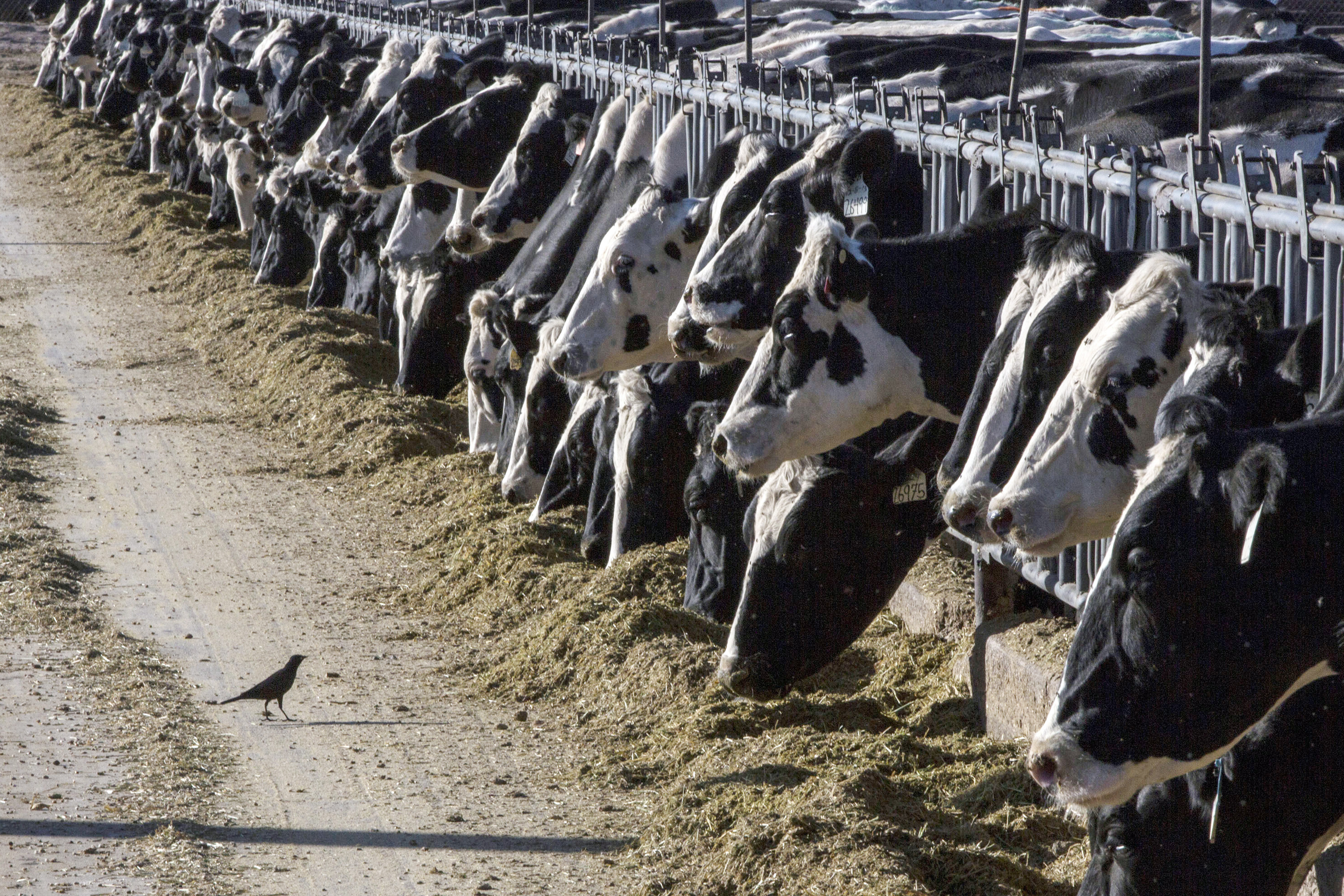Researchers at the Washington Animal Disease Diagnostic Laboratory at Washington State University plan to track respiratory diseases that could spread between livestock and humans. That includes the current avian flu strain that has recently jumped from birds to dairy cattle, and from cattle to at least two people.

FILE - Dairy cattle feed at a farm on March 31, 2017, near Vado, N.M.
Rodrigo Abd / AP
The project, which is being funded by a $1.5 million grant from the Centers for Disease Control and Prevention and the Washington Department of Health, will build up capacity for the WADDL to track diseases like the H5N1 avian flu strain that’s spread to dairy cattle, and like SARS-CoV-2, or COVID-19.
So far, over 80 dairy cattle herds in 10 states, including Idaho, New Mexico, Colorado, Kansas, Michigan, North Carolina, Ohio, South Dakota and Texas, have had positive cases of the avian bird flu strain, according to the CDC. It’s the same strain that has already devastated the U.S. poultry industry, including in Oregon and Washington, and caused billions of dollars in losses. Neither Oregon or Washington have positive cases of infected dairy cattle with bird flu.
Dr. Kevin Snekvik, a veterinary medicine professor at Washington State University in Pullman and the executive director of WADDL, said his team will track and compare respiratory viruses like bird flu and see if there are any genetic similarities between samples from livestock animals and humans.
“If you do that enough times across enough animals and farms, you can start to develop a picture of where that virus came from and track how it’s moving through the population,” he said.
In a statement, Dr. Thomas Waltzek, a virologist at WADDL, said if the team can better detect a virus and where it came from, it can help agriculture and public health officials minimize that disease’s spread across the Pacific Northwest.
“These are species that have the potential to spread diseases to humans,” Waltzek said. “It’s all about detecting these diseases quickly, determining if the viruses have pandemic potential and immediately taking corrective actions to hopefully prevent a pandemic.”
Snekvik said one component of the project is focused on public health, but it’s also about safeguarding regional and national food security.
“We also have to be really cognizant of the fact that this is a double-edged sword and it can also be affecting our national security in the sense of food supply,” he said. “That’s why it’s so important.”
So far, the risk of bird flu transmission in the public remains low, but farmworkers exposed to infected animals are at higher risk. As of June, two people working closely with sick dairy cattle have tested positive for bird flu, one in Texas and the latest case in Michigan. Both only experienced mild eye irritation symptoms and have recovered, according to health officials.
Officials with the U.S. Department of Agriculture have said milk is still safe to drink because it’s pasteurized. Health officials in Oregon have warned against drinking raw, or unpasteurized milk.



